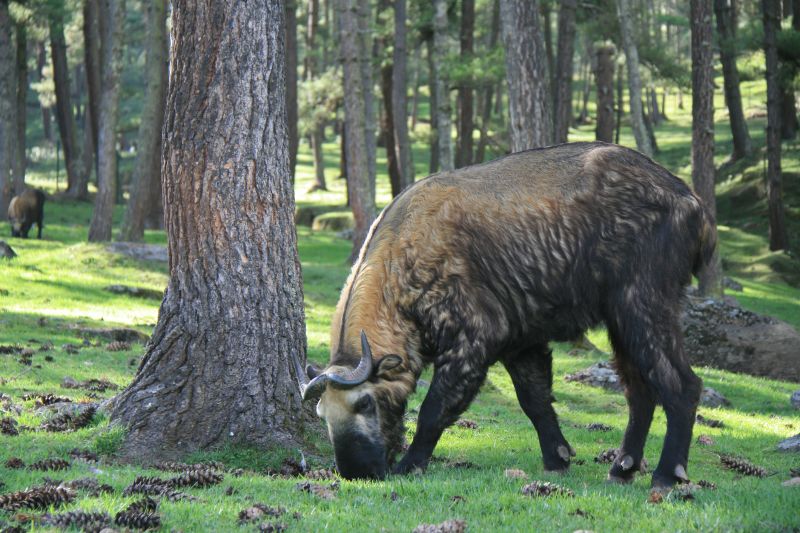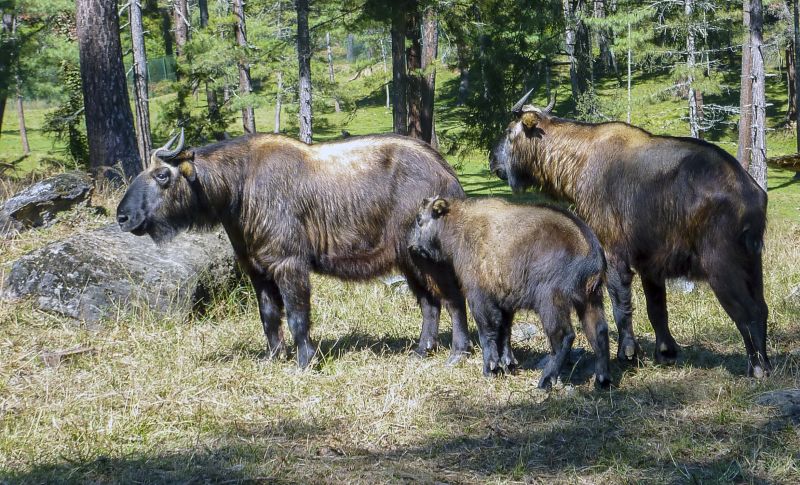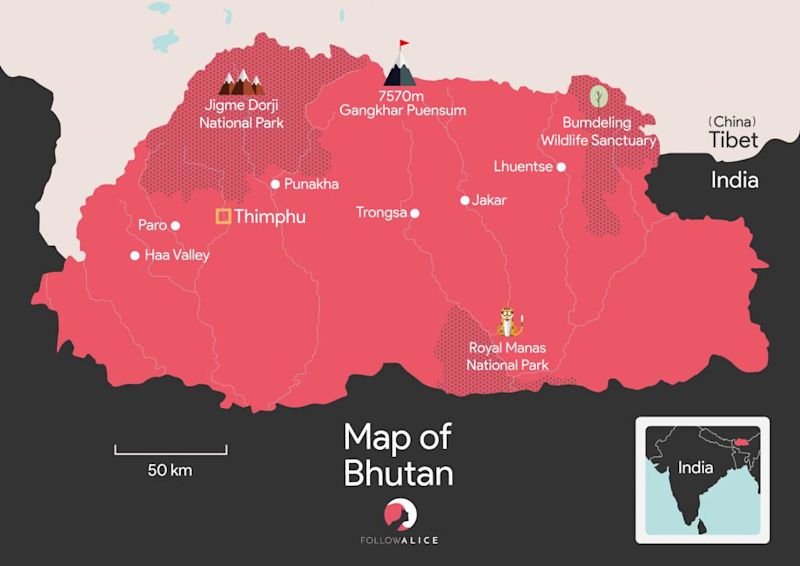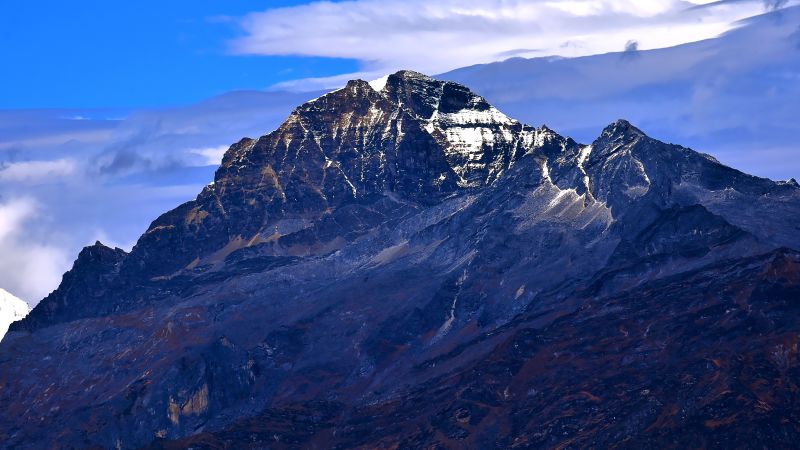
Bhutan's national animal, the takin, is the largest mammal you've never heard of
The takin is hard to define, even for taxonomists. The C20th biologist George Schaller amusingly referred to it as a "beestung moose". Here are some interesting facts about takins, including the myth that helped to make it Bhutan's national animal.
What is a takin?

If you head into the Himalayas and are lucky, you might comes across a large herd of up to 300 takins grazing on a high mountain slope!

The takin, a generally unaggressive herbivore, is the national animal of Bhutan. That seems fitting, as Bhutan is a very peaceful nation.
Why make the takin Bhutan's national animal?

Is the takin endangered?

Where can I see takins?

The national flower: the blue poppy. The national tree: the cypress. The national bird: the raven.
